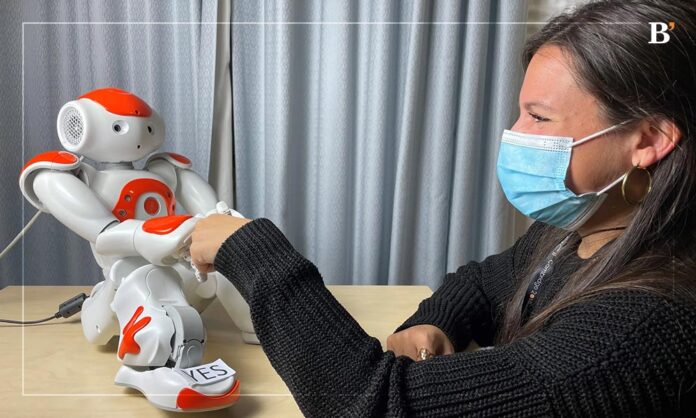Key Highlights
- The physical appearance of robots affects how people interact with them. Participants in a study on robot-led workplace mental wellbeing sessions felt more connected to a toy-like robot than a humanoid-like robot.
- The study suggests that robots could be a useful tool for promoting mental wellbeing at the workplace, particularly when there is a lack of resources and personnel to implement traditional wellbeing practices.
A study conducted by researchers from the University of Cambridge suggests that a robot’s physical appearance can significantly impact how individuals interact with it. The researchers worked with a tech consultancy firm, offering 26 employees weekly robot-led mental wellbeing sessions for four weeks.
They used two different robot wellbeing coaches with identical voices, facial expressions, and scripts. However, one robot looked like a toy, while the other was more humanoid.
Impact of Physical Appearance on Human-Robot Interaction
Participants who worked with the toy-like robot reported feeling more connected with their coach than those who worked with the humanoid-like robot.
According to the researchers, popular culture’s perception of robots affects individuals’ expectations of them. When people encounter robots in real life, their expectations often do not match reality. The toy-like robot looked simpler, and participants may have had lower expectations, making it easier to connect with.
Study Findings
The study’s results show that robots can be useful tools for promoting mental wellbeing at the workplace, addressing a gap in implementing wellbeing practices limited by a lack of resources and personnel. The World Health Organization recommends that employers take action to promote and protect mental wellbeing at the workplace.
The researchers worked with Cambridge Consultants to design and implement a workplace wellbeing program using robots. Over four weeks, employees were guided through four different wellbeing exercises by either the QTRobot or the Misty II robot.
The robots were programmed to have:
- a coach-like personality
- high openness and conscientiousness
- same facial expressions and voice
The only difference between them was the physical robot form.
Participants who worked with the toy-like Misty robot reported having a better working connection with the robot than those who worked with the child-like QT robot. Although participants’ expectations of the robot did not match with reality, they still found the wellbeing exercises helpful and were open to talking to a robot in the future.
The researchers are enhancing the robot coaches’ responsiveness during coaching practices and interactions. The study’s findings were reported at Stockholm’s ACM/IEEE International Conference on Human-Robot Interaction.




